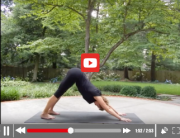The best way I can describe the emotional tone in the room was “contained and intense,” as I prepared to facilitate a group of caregivers for patients living with aplastic anemia and other bone marrow failure diseases.

An hour earlier I had delivered an interactive presentation for patients and caregivers about how to manage their new normal — living with a serious, chronic disease.
Now I was preparing to spend two hours dedicated exclusively to caregivers who were seeking emotional support for the extraordinary difficulties and challenges they had faced and would continue to face with their loved ones.
Caregivers kept filing into the room and we had to keep adding chairs. The room got quite warm. I used no audiovisual aids or handouts and focused on just three questions.
Two hours later, what struck me most was how nothing had really changed in these people’s situations and yet somehow they were changed.
I didn’t have to urge anyone to speak. Since these are rare diseases, it was the first time many of these caregivers had the opportunity to speak to another caregiver. Some had been waiting years for the opportunity.

My questions were simple, but carefully selected:
- Do you feel it is best to hide the scary facts from the patient or do you think it is best to tell the patient everything?
- What is the one thing that is most difficult for you right now?
- How are you taking care of yourself?
There were other questions that would have been just as effective in focusing on caregivers’ emotional and coping issues. More important than the questions and how they were phrased was being fully “present” with the people in the room.
I think of this skill as the ability to simply “be with” someone as they wrestle with a difficult decision, situation, or emotion. And after all these years, I continue to be in awe of how incredibly helpful it is when we are able to do this for another person.
Try These Three Ways To Make Connections Faster And Stay Present Longer:

1. Make eye contact easy.
Making eye contact is a significant emotional event — and a great way to instantly connect with another person.
One of the easiest ways to make the right level of emotional connection? Simply notice the color of the person’s eyes.
2. It’s better to receive than to give — at least at first.
Seek out someone who is good at establishing an appropriate degree of emotional connection with you — Someone that pays attention to what you’re saying with a non-judgmental awareness that is friendly, curious, and compassionate.
Receiving this kind of connection from another — seeing it modeled and feeling the effect it has on you — is often the first step in getting good at giving it to others.
3. Cultivate the art of being “fully present.” Start with yourself.
It’s paradoxical: If you want to connect better with others and more effectively influence them, start by cultivating the art of being fully present with yourself.
I hesitate to mention the most powerful way I learned to do this because it’s… meditation.
Here’s how I got my Type-A, OCD self to begin a meditation practice: I started with what I referred to as my “mocha meditations.” Every morning I wrapped myself in a blanket and sat on my couch for ten to twenty minutes in silence as I sipped a cup of coffee and watched my breath go in and out.

On days that didn’t work out, I did yoga vinyasa, a form of “moving meditation.”
Other “moving meditation” alternatives to consider: tai chi, therapeutic journaling, or voice dialogue facilitation. The idea is to just start somewhere and find what works for you.
We may not be able to fix or change things for the people around us, but when we’re fully present we somehow help them deal with things that can’t be fixed or changed.
When we’re fully present with another human being we provide them a container that helps them hold their experience without being shattered by it.















